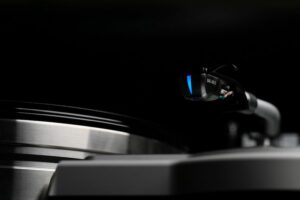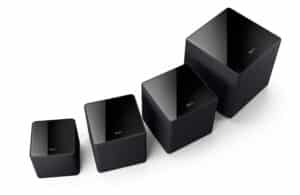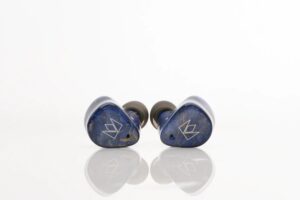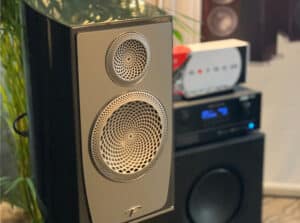Moving Coil vs. Moving Magnet Turntable Cartridges
Which Phono Cartridge Is Best for Your Turntable Setup?
What’s in a cartridge? This small, often overlooked turntable component is critical to the entire audio experience. The most common types of turntable cartridges are moving magnet (MM) and moving coil (MC). Let’s explore and compare both to help you find the best option for your Atlanta audio system.
SEE ALSO: The Luxman Legacy: Crafting the Ultimate Sound Experience
How Turntable Cartridges Work
A turntable cartridge isn’t just a needle. It’s an entire (albeit tiny) system that converts a vinyl record’s grooves into electrical signals. When the stylus, or needle, makes contact with the record, the vibrations from the grooves cause the stylus to move. The stylus then moves a magnet and coil system, generating its own electrical signal. These signals are then amplified and played through your speakers.
Moving Magnet Cartridges
Originating in the 1930s, moving magnet (MM) technology is still found in many turntable cartridges today. Moving magnet cartridges generate electricity using tiny magnets at the end of a needle, which connects to the diamond tip you see touching the record.
As the diamond tip moves along grooves, the movement causes the magnets on the other end of the needle, inside the body of the cartridge, to move back and forth, too. Coils of wire are mounted on the inside of the cartridge body, and the movement of the magnets in close proximity to the coils creates electricity!
The magnets and coils in most moving magnet cartridges generate approximately 5 millivolts of electricity through this process, known as electromagnetic induction. Even if your turntable wasn’t plugged in, and if you could crank the record yourself, this tiny amount of electricity creates music. If you’ve ever placed your ears next to a turntable while the speaker volume was turned down, you’ve probably heard music playing faintly. That’s produced by the magnets and coils alone! When connected to an amplifier, the music produced by the MM cartridge is now amplified for all to hear.
Moving Coil Cartridges
Moving magnet cartridges work fine and well, but in 1948, Ortofon developed a new cartridge design: the moving coil. Now, coils are on the end of the needle with magnets mounted inside the body of the cartridge. The coils of wire are much lighter than magnets, lowering the overall mass of the stylus and making it more nimble when tracing vinyl grooves. With less mass weighing the stylus down, it can react more accurately to the groove’s surface and pick up even more detail.
Great, we can hear more detail! The only downside? Moving coil cartridges produce far less electricity—only about 0.5 millivolts. Now, you’ll need more amplification to hear the music. And the more you amplify the music, the more you also amplify the noise inherent in any stereo, so you’ll need a very good phono stage.
MM and MC cartridges each involve a tradeoff. MM cartridges have higher power output but are heavier and so reproduce less detail. MC cartridges are lighter and more detailed but have less output.
MM vs. MC: Why It Matters
Does it really matter which cartridge you use on your turntable: moving magnet or moving coil? Most audiophiles prefer MC models for their audio clarity, stereo imaging, and transparency. However, due to their lower electrical output, MC cartridges do require a phono preamp with a ton of gain. A preamp designed for MM cartridges cannot accommodate MC cartridges, so it’s important to get the gear that works together.
Another consideration: moving magnet cartridges are easier to produce; therefore, they tend to be more affordable and easier to replace than MC cartridges. If you want the best sound possible out of your turntable, usually MC cartridges are the way to go. But MM cartridges are usually the best way to start out if you’re just getting into vinyl!
A Third Option?
For decades, MM or MC cartridges were the only options. In the ‘60s and ‘70s, Japanese engineer Isamu Ikeda tried to develop a new approach that would be both lightweight and high output using photoelectricity. The technology was abandoned for decades until, in recent years, DSAudio resurrected it with all-new phono optical cartridges.
We’ll write more about that in our next blog post. Until then, visit HiFi Buys in Atlanta, GA, to try different turntables and cartridges and compare them for yourself!
Any questions? Looking to build an audiophile-worthy turntable system? Contact HiFi Buys to learn more, or subscribe to our monthly HiFi newsletter.





